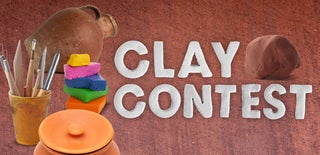Introduction: Model Magic Texture Stamps
I once gave my kindergarten students a small ball of Model Magic to experiment with, and one of them pressed it up against a texture rubbing plate. This wasn't what I had in mind for the activity, but it turned out to be a wonderful way for my students to explore not only the clay but also texture. We were then able to look for physical textures around the room and create visual textures on our papers.
Step 1: Making a Texture Stamp
Roll up a small ball of Model Magic. If you've never worked with Model Magic before, check out my Model Magic 101 instructable for tips on this particular clay's quirks and another fun project.
Press the ball onto an object or surface that has texture.
Lift the clay from the surface and allow to dry for 24 hours.
Step 2: Texture Surfaces
These are all the stamps I made from various textures around my home. Don't worry about the clay getting stuck. It sticks very well to itself but not to other surfaces. As you can see, I even did an impression on a crochet blanket and a straw hat.
Step 3: Stamping
Because ink pads are expensive and not very versatile, we use markers for our ink in my classroom. Color the stamp with a marker.
Press the ink side down on your paper.
Step 4: Pretty
You can even put more than one color on the stamp before putting it on your paper.
I used the same color on each stamp when reusing to keep them looking pretty for pictures, but once the marker has dried on the stamp you can certainly switch to a different color.
Step 5: Texture Drawings
My young students love making abstract artworks with these stamps, but you could use them for objective artworks as well. Add a scaly texture to a fish or reptile for example.
Step 6: Have Fun!
Mix, match, and trade stamps for fun and learn about art and texture at the same time.

Participated in the
Clay Contest

Participated in the
Summer Fun Contest













